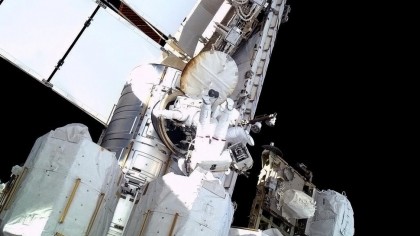
This week we've seen a pilotless passenger-plane hit the British skies, the last barrier to human cloning be breached, and we've found a large cache of water, untouched by the rest of the world for at least one billion years, buried 1.5 miles deep within the Earth.
And as if that wasn't enough, the world's first lab-grown burger made from bovine neck stem cells in a petri dish will hit the grill of an undisclosed London location.
Which makes us beg the question - could you stomach test-tube meat?
First lab-grown burger ready for tasting -- A record-breaking taste test will soon be underway in London when the world's first laboratory-grown burger will be cooked and eaten. The meat, which is grown from cow neck stem cells invitro under carefully controlled conditions, costs over £210,000. And that makes it one of the most expensive pieces of meat ever cooked. While the quantity of burgers available and venue are currently unknown, the researchers behind the cowless beef say it tastes "reasonably good". It might be a while before lab-burgers hit your local takeaway though. [The Register]
First pilotless passenger-plane manages 800km journey over Britain -- We've seen many unmanned military drones make their way to the skies, but now a passenger plane has managed to fly itself - completely pilotless - from Lancashire to Scotland through civilian airspace without a hitch.
A flesh-and-blood pilot took the controls for take-off and landing, with the plane flying fully autonomously in between. Not only that, but the plane was thrown dummy obstacles to avoid, with fake planes being entered into its flight data, forcing it to make flight-path corrections in the same way a real pilot would. The next step is to construct a digital eyeball capable of discerning complex objects, like the difference between a hot-air balloon and a cloud, but soon UAVs could be free to roam our skies. [New Scientist]
Astronauts take a trip into the void of space to fix leaking pump -- While NASA does have a few robots up in space to do its bidding, there are some things that real men still have to do. Two astronauts were forced into an impromptu EVA to replace a pump on the outside of the ISS, which was leaking ammonia into space and threatening the operation of one of the solar power generators. Thankfully everything was fixed without issue, but not before providing some amazing new images. Sometimes, even in the technological age of space stations, you still need a good old screwdriver and wrench. [NASA]
Get daily insight, inspiration and deals in your inbox
Sign up for breaking news, reviews, opinion, top tech deals, and more.

The last barrier to human cloning has been breached -- For the first time scientists have managed to clone a human stem cell, meaning that human cloning is now fully possible. Ever since Dolly the sheep became the first cloned animal, researchers have been using human stem cells to try and clone human cells, treading a very thing ethical line.
Now, via a similar process to the cloning of Dolly the sheep, nuclear transfer has been perfected in humans. Simply by taking the nucleus of one foetal stem cell and inserting it into an egg cell with its own DNA removed, you produce a clone cell that can then divide and grow as normal. Years of research and careful tweaks to the biochemical process have made this breakthrough possible, meaning we could now actually make a full-formed human clone, not that anyone is suggesting we do that, of course. Instead, this new source of cells will pave the way for possible repair of tissue and organ damage in degenerative diseases, as well as medical studies on human cell lines that weren't possible before. The hope is that the same technique can be used to produce cells from adult stem cells soon too. [Nature]